Social and economic development. Рубрика в журнале - Arctic and North
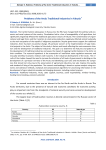
Problems of the Arctic traditional industries in Yakutia
Статья научная
The transformations taking place in Russia since the 90s have changed both the political and economic and social systems of the country. Privatization led to a loss of manageability of all agriculture, but significantly negatively affected the traditional agricultural sectors of Yakutia. The transformation of organizational and legal forms and the transition to small-scale production negatively affected animal husbandry as the main occupation of the republic's indigenous population. Despite government support for traditional industries, there has been no positive change. Of particular concern is the implementation of large industrial projects in the Arctic. The subject of the study is factors and trends affecting the socio-economic situation and the development of traditional industries. The goal is to determine the features and patterns of the development of traditional industries and assess the impact of ongoing transformations in the Arctic on their condition. The research hypothesis is the assumption of insufficient state regulation measures and mutually beneficial economic relations with business in the industrial development of the Arctic. The results of the studies showed the need to increase the attention of all levels of government in deciding on the development of a particular territory of the Arctic and identifying such rules and mechanisms for companies that should not only ensure the preservation of agricultural industries, but also improve the quality and standard of living of the population. The research methodology is based on system analysis using economic and statistical methods, analytical and computational algorithms for processing information on the development of agro-industrial complex and changing dynamics, including content analysis.
Бесплатно
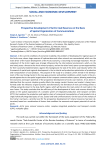
Статья научная
In the current conditions of economic instability, the problem of developing the regional space of the Arctic zone, where huge reserves of hydrocarbons and other minerals are concentrated, which are the main driver of the future development of the Arctic economy, is becoming increasingly important. The development of the Arctic region was strongly influenced by the international environment, which, on the one hand, poses a threat to the Arctic mineral projects, and on the other hand, opens up new opportunities for their successful implementation. Against this background, the task of the Arctic coal industry within the framework of spatial and regional development is the territorial and production optimization of production and transportation of coal products. The purpose of the study is to analyze current trends in the development of the coal mining market in the new geo-economic and political conditions, which results in the proposed approaches to the spatial organization of the transport communications system, allowing maximizing the economic and export potential of the prospective development of Arctic coal reserves. It has been established that the current situation greatly affects the energy market. Russian coal market is being transformed under the influence of geo-economic transformations, the formation of new coal mining centers is shifting eastwards closer to the Asia-Pacific region, which will become the main center of coal trade in the near future. The study concludes that the efficiency of the development of Arctic coal reserves directly depends on the spatial organization of a complex system of integrated production and transport corridors (IPTC) that combine the production and logistics chain of mining and transportation of coal products into a single holistically integrated space of sea, coastal and land communications. On the basis of the analysis of the Taimyr coal basin, a priority level for the prospective development of mineral resources has been determined, based on a combination of factors that condition the economic and export potential of coal deposits.
Бесплатно
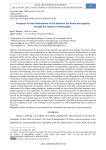
Статья научная
The article outlines the relevance of the research topic related to the strategic orientation, within the framework of which the modernization of the Northern Sea Route and the implementation of major projects in the northern regions and in the Arctic zone are planned. The object of the study is the Northern Sea Route (NSR), and the subject is the analysis of its development prospects. The study is aimed at assessing the current state of the NSR and the role of the Arkhangelsk Oblast, highlighting the advantages of northern maritime logistics and the prospects for its development. This research involved an extensive review of analytical materials, reports from specialized institutions and scientific publications. A mixed methodology was implemented, integrating both qualitative and quantitative approaches. Qualitative methods included observation, interviewing, expert assessments and testing. Quantitative methods, including questionnaires and monitoring, were also used to ensure a comprehensive analysis. Processing of the obtained information was carried out using methods of analysis and synthesis, comparison, as well as an empirical approach. The paper identifies the main directions of cooperation in the Arkhangelsk Oblast related to the reorientation of cargo supplies along the NSR. In the current geopolitical conditions, the use of the NSR capabilities is one of the key priorities in cooperation with the People’s Republic of China. Another promising area of cooperation with the Arkhangelsk Oblast is the development of logistics along the NSR through the seaport of Arkhangelsk with the Republic of Belarus. The importance of the NSR is associated with the establishment of an orderly supply scheme for remote territories of Russia, which will allow forming an integrated approach to the organization of northern delivery. Such promising areas of development of the northern trajectory require modern maritime and land infrastructure. In this regard, the Comprehensive plan for the development of the Arkhangelsk transport hub for the period until 2035 has been adopted. An analysis of the accumulated experience of the NSR operation shows that this route has become an important element in global supply chains in recent years. The potential of the NSR as an alternative route can become a significant factor in the formation of new economic ties and strengthening Russia’s position in the Arctic.
Бесплатно
Reindeer Tracking Technologies in the Russian Federation
Статья научная
Currently, reindeer husbandry actively uses tracking technologies to identify animals. They allow solving the problems of breeding and zootechnical accounting, tracking the movement of animals between herds, and carrying out antiepizootic measures. The electronic databases with individual characteristics of reindeer formed in this process allow speeding up the breeding process, organising breeding work in reindeer breeding, improving the breed and regulating the herd. Keeping an electronic “registration” of calves to their mothers gives the possibility of system functioning of cross-breeding estimation of animals that will undoubtedly increase both productivity and economic efficiency of reindeer breeding as a whole. This article addresses an issue related to reindeer tracking technologies. Attention is paid to radio tracking and satellite tracking techniques. The use of modern methods of chipping animals is considered on the example of various territories of the Russian Federation: the Yamalo-Nenets Autonomous Okrug, the Republic of Sakha (Yakutia), the Trans-Baikal Krai, the Murmansk Oblast, the Krasnoyarsk Krai, the Republic of Karelia, the Arkhangelsk Oblast. The work carried out on deer chipping is considered for various time periods, during which monitoring, programs, projects and other large-scale studies of animal movement paths were carried out. The resulting data can then be processed using mathematical tools, after which conclusions can be drawn about the impact of the environment on reindeer migration routes.
Бесплатно
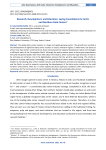
Research, development, and education: laying foundations for Arctic and Northern data centers
Статья научная
The global data center industry is a huge and rapidly growing sector. This growth has resulted in the development of significant data center clusters in various northern regions. Furthermore, the desire to attract new data center investments has been incorporated into regional development plans and strategies in different parts of the Circumpolar North. Although the policy-makers seem to have great expectations, they and the general public often know little about the industry, which consumes huge amounts of electricity and plays an immense role in the digitalization process that the world is experiencing. This article attempts to increase awareness, knowledge, and understanding of these matters among all relevant stakeholders by introducing data center-related research and development activities and education in the Arctic and the North, as well as research concerning the development of the data center industry in the cold, northern environment. After all, it is often argued that these particular conditions offer advantageous circumstances for the construction of environmentally friendly and sustainable data centers.
Бесплатно
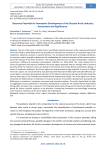
Статья научная
The aim of the work is to determine a scientifically based assessment of the resource potential of the Arctic industry, which determines the possibility of transition the economy to an innovation type of development, taking into account its specific features. The considered scientific works of foreign and domestic scientists made it possible to determine the methodology for rational assessment of the resource potential of the industry of the Arctic territories. The study was performed on the basis of production, technical, investment, staffing and innovation development indicators for 2013–2019. The study showed that in terms of production and technical indicators the Arctic regions generally have an average level of resource potential while the maximum values are typical for the Nenets and Yamalo-Nenets Autonomous Okrugs. In terms of investment indicators, the Arctic regions are characterized by high potential. In terms of staffing, the Arctic regions are characterized by low potential while Murmansk Oblast demonstrated effective personnel policy. Innovation development indicators of the Nenets Autonomous Okrug and the Murmansk Oblast are lower than in the Chukotka and Yamalo-Nenets Autonomous Okrugs. The Arctic regions are characterized by the differentiation of indicators of resource provision of economic development associated with differences in production, investment, personnel and innovation spheres. The study showed that the highest aggregate resource potential for innovation development is typical for the Yamalo-Nenets Autonomous Okrug while the lowest one is typical for the Chukotka Autonomous Okrug and the Murmansk Oblast. Proposals for further scientific research in the direction of enhancing innovation and accordingly increasing socio-economic indicators of the Arctic regions were developed.
Бесплатно
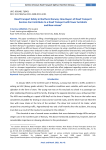
Статья научная
This paper contributes to filling a knowledge gap by presenting new research within the practical field of road transport. It takes the buyers of road transport services as its point of entry and seeks to answer the follow question: How can buyers of road transport services contribute to safe road transport in northern Norway? A qualitative approach was selected for this study, and semi-structured interviews were conducted with six different buyers of road transport services. By using a modified version of The Pentagon Model, different aspects were analyzed in order to identify organizational characteristics and qualities that will improve the possibility for buyers of road transport to contribute to a safer road transport in Northern Norway and thereby contribute to fewer accidents and near-misses. The following characteristics and qualities were identified: 1) the importance of developing a detailed formal contract with the provider of road transport; 2) being aware of the possibilities with new technologies; 3) understanding that the decision criteria for ordering transport can influence road transport safety; 4) seeing the importance of good communication with both the transport organization and the authorities; 5) recognizing that knowledge of and trust in a transport organization is important but could also affect judgement regarding revisions and controls. This study suggests that buyers of road transport services can contribute to a safer road transport in northern Norway by emphasizing these five characteristics and qualities.
Бесплатно
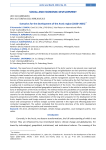
Scenarios for the development of the Arctic region (2020–2035)
Статья научная
The importance of selecting the development of the Arctic seems to be relevant since rapid and irreversible changes are taking place there. Climate change and globalization are their prominent examples. A complex of factors has both positive and negative impacts on the use of natural resources and the positioning of states located not only within the Arctic but also outside it. The questions arise: what is the significance of these changes for geography, politics, and the management system? How should the comprehension of these processes be built? The relevance of the topic is enhanced by the fact that Russia has the most significant Arctic sector among the states with access to the Arctic Ocean. Therefore, our country has a leading role in working out strategies for the development of the Arctic. The comprehensive approach (considering the economic and political-geographical positions) is central in the article to analyze the directions of development of the Arctic territories. The method reveals the possibilities of sustainable development, which will provide Russia with strategic benefits within the Arctic and globally. The article discusses scenarios for the development of the Arctic, including the Arctic zone of the Russian Federation, in the long-term perspective (until 2035). Substantiation of the long-term prospects for the development of the Arctic, despite Russian and foreign research, seems to be unrealistic due to lack of knowledge about the nature and consequences of climatic changes currently observed in this region and affecting global environmental management. The authors concluded that the priority directions of the Arctic development should be the ones based on positive and innovative trends.
Бесплатно
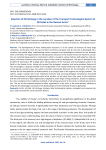
Статья научная
The development of Arctic hydrocarbon resources is in the sphere of interests of many large companies. At the same time, the vast northern territories and polar seas do not have a developed infrastructure that would allow implementing various transport and technological solutions for the development of oil fields. The opportunities for attracting the resources of the Russian Arctic into economic circulation are currently being used to a small extent, which is caused by various factors, both objective and subjective, that were formed at the previous stages of the country's development. This work is devoted to the problem of choosing an HR strategy when placing objects of the transport and technological system of oil fields in the Russian Arctic, taking into account the ecological, economic and socio-economic features of this macroregion. Using the example of oil and gas fields in the coastal-shelf zone of the south-eastern part of the Barents and Kara Seas, the authors consider multivariate forecasts for the formation of a rational scheme for the transportation of hydrocarbons as an integral part of the regional oil and gas complex. The authors assign a special role to the important economic and socio-psychological components associated with the processes of organizing the work of oil workers. At the same time, they come to the conclusion that the shift method of labor organization, adopted by many large mining companies, should not displace, but only complement the traditional methods of attracting personnel to the Arctic oil infrastructure facilities. The use of the combined method of labor organization in the Arctic is the most optimal, allowing to integrate the advantages and localize the disadvantages of other methods of labor organization.
Бесплатно
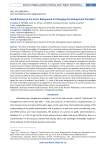
Small business in the Arctic: background for changing the management paradigm
Статья научная
The article is devoted to the analysis and justification of socio-economic background that initiates the need to change the paradigm of management for small and medium-sized businesses in the Arctic zone of the Russian Federation. The key points of this analysis, in addition to the generally accepted estimates of demographic trends, were those indicators of the dynamics and structure of the standard of living which are the link between the population as a consumer of goods and services, and small businesses that create these goods and services. In the almost complete absence of a single content that allows full monitoring of small and medium-sized businesses, the state makes attempts to make adequate management decisions based on the project management methods. It is especially clearly reflected in the adopted and implemented system of national and federal projects and programs. At the same time, even in the current trends in the formation of information and analytical support for these projects and programs that directly or indirectly relate to small businesses, economic aspects often prevail over social ones, which is directly reflected in the formation of the management paradigm. At the same time, a systematic approach and appropriate tools, lead the authors to the conclusion that in the coordinate system of socio-economic development of the Arctic territories, the economic drivers are large corporate structures, while small businesses are assigned the role of a localized “social buffer”. It is one of the main backgrounds for changing the paradigm for small and medium-sized business management in the Arctic areas of Russia. The current economic situation caused by the COVID-2019 pandemic fully confirms our assumptions.
Бесплатно
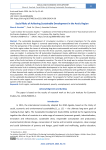
Social Risks of Achieving Sustainable Development in the Arctic Region
Статья научная
The sustainable development of circumpolar countries is of great importance for the whole world, because the Arctic Region is currently experiencing an unprecedented level of economic activity. From the perspective of the concept of sustainable development, the intensification of industrial activity in the Arctic region makes the issues of achieving long-term environmental and social sustainability for local communities relevant. Despite the fact that the Arctic countries, especially the countries of Northern Europe, are leaders in achieving the UN Sustainable Development Goals, additional attention is needed to coordinate efforts to achieve them at all levels of administrative-territorial management. The relevance of our study is determined by the need to overcome the challenges and threats to the sustainable development of the Arctic territories of circumpolar countries. The aim of the study was to analyze the social risks of achieving sustainable development of the Arctic region. The methodological basis of the study was the system approach, methods of structural-historical and comparative-geographical analysis. It was substantiated that social risks in achieving sustainable development in the Arctic region are limited access to educational services; social tension in the labor markets, produced by professional and qualification imbalances of labor demand and supply and problems of youth employment; child poverty and poverty of the indigenous population. The scientific novelty of the research is in substantiating the social risks that pose a threat to the sustainable development of the Arctic region. The prospects for further research are conditioned by the need to solve urgent socio-economic and managerial problems associated with the sustainable development of the Arctic region.
Бесплатно
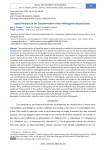
Spatial Analysis of the Transformation of the Arkhangelsk Industrial Zone
Статья научная
The transformation of industrial zones in cities during the transition of economy to post-industrial development is reflected in the emergence of abandoned industrial areas on the sites of closed inefficient enterprises. At the same time, the city budget ceases to receive taxes from these areas. For a more rational use of such lands, their revitalization and renovation are necessary. The problem of using former industrial zones is typical for all cities in the Arctic. Using Arkhangelsk as an example, a retrospective analysis of the formation and transformation of its industrial zone was conducted. It does not represent a continuous space, but is located separately in several parts of the city. Based on the peculiarities of the geographical location and specialization of production, three industrial areas have been identified: Northern, Central and Southern. Analysis of the public cadastral map has determined the current state of the industrial territories of enterprises that existed in Arkhangelsk during the Soviet period. It was revealed that most of the closed enterprises are located in districts with poor transport accessibility in the northern area on island territories and partially in the southern area. These are mainly enterprises of the timber industry complex. This process contributed to the degradation of the outskirts of Arkhangelsk, especially on the island territories. At the same time, most of the remaining timber industry enterprises are located in the central part of the northern area, near the main highway connecting it to the city center and the seaport. This area is the most promising for the revitalization of production. The central industrial area has undergone the least transformation. Here, residential construction is taking place on the site of industrial sites, and public and business spaces are being created. In the southern industrial area, there are promising territories for the creation of logistics zones (the port areas of Zharovikha, Bakaritsa, and Levy Bereg). Former industrial zones on island territories can be used to create landscape parks and to develop recreation.
Бесплатно
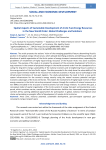
Статья научная
The article presents the authors’ vision of the emerging geopolitical factors determining Russia’s position in the global energy infrastructure, which allowed identifying problems and defining priorities and directions of spatial organization of the Arctic system of energy transport communications, expanding the possibilities of involvement of highly liquid energy resources of the Russian Arctic into active economic turnover. The purpose of the study is to analyze the prospects of the economic development of Arctic energy resources in the context of projected changes in the world economic order from the standpoint of ensuring the long-term energy sustainability of the national economy and strengthening Russia’s position in the energy markets of the Asia-Pacific region. The data presented in the study show the vulnerability of the current export-oriented model of the resource-raw materials economy in Russia due to technological and infrastructural limitations of transport logistics. The study substantiates the need to form a new world-system infrastructure for the country’s energy security using the natural resource potential and geo-economic advantages of the Arctic territories. This implies the involvement of highly liquid reserves of fossil energy resources in the Arctic into active economic turnover through the creation of mineral resource centers (MRCs) included in the structure of world economic fuel and energy relations. To achieve this goal, a conceptual model of spatial organization of the Arctic system of energy transport communications is proposed, which combines marine, coastal and land infrastructure facilities into intermodal energy transport corridors (IETC), opening additional opportunities for participation in global, national, interregional value chains and providing a synergetic effect of development of remote Arctic territories.
Бесплатно
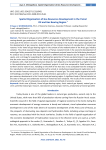
Spatial Organisation of Gas Resources Development in the Yamal Oil and Gas Bearing Region
Статья научная
The Yamal oil and gas province (OGP) is strategically important for the Russian gas industry. In the coming decade, gas production in Yamal is expected to grow to 180–200 billion cubic meters per year. The main goal of the article is to solve a scientific problem consisting in the study of the spatial organization of the development of gas resources, determination of the rational structure of reproduction of natural gas reserves in the Yamal oil-gas-bearing region in the context of the modernization of the Arctic gas industry complex. The article assessed the gas resources of Yamal, revealed trends in the economic development of natural gas fields, presented the characteristics of investment projects based on the fields being developed. An analysis was carried out that made it possible to differentiate the deposits by the degree of their prospects, and a strategy for expanding the hydrocarbon potential of Yamal was determined. It was revealed that the main areas of production in the Yamal oil-gas-bearing region are associated with the development of deposits with a high level of Cenomanian deposits. Such deposits are characterized by a higher increase in the capitalization and profitability of investment projects in real time compared to fields located in the northern and far eastern seas, including on the shelf of the Kara Sea. It was concluded that the strategy for the reproduction of hydrocarbon potential will be aimed at conducting prospecting and exploration in order to transfer forecast resources to industrial reserves of natural gas. The study applies a general scientific methodology providing for systemic and comprehensive approaches to justify the spatial organisation of gas resources development in the Yamal oil and gas bearing region. A significant body of factual material on the state of free gas and condensate reserves in Yamal has been analyzed. The results of the research were obtained with the use of comparative-analytical, statistical methods of economic analysis.
Бесплатно
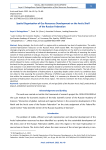
Spatial Organization of Gas Resources Development on the Arctic Shelf of the Russian Federation
Статья научная
Being strategic, the Arctic shelf is a region with an extremely low level of exploration. The undiscovered hydrocarbon resources on the Russian Arctic shelf exceed 90%. The long-term development of strategic programs and projects for the development of gas production on the shelf are constrained by insufficient technical accessibility of industrial development, as well as the difficulty of assessing the actual volume of initial potential oil and gas resources. The reproduction of free gas reserves has been assessed, the level of parity between production and growth of explored reserves has been determined. The state of the gas resources of the Arctic shelf was studied taking into account localization in oil and gas regions, which allowed to make a conclusion about the degree of exploration of the resource base and to identify the basis for the gas potential. The factors restraining the development of offshore projects were identified and analyzed. It was determined that offshore projects should be presented to investors with more attractive operational, technological and economic indicators than alternative onshore projects. The lack of tested methods for the development of hydrocarbons at superdeep depths under severe ice conditions does not allow to fully assessing the economic efficiency of offshore gas projects in the Arctic. It is concluded that within the resource base of Arctic offshore fields, it is necessary to allocate the static (probabilistic) potential of hydrocarbon resources of the Arctic region. The need to transform the Arctic foreign policy is identified.
Бесплатно
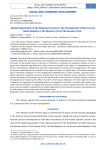
Статья научная
The article analyzes the possibilities of studying the issues of the interterritorial distribution of the economy, taking into account maritime communications in the development of solid minerals in the western sector of the Russian Arctic on the basis of interaction of national and corporate interests at the regional level. Relatively large deposits of solid minerals are located in this region. The development of non-ferrous metal deposits, taking into account the requirements of rational nature management, is the engine of economic development in the western Arctic regions of Russia. An urgent task is the scientific substantiation of favorable conditions for the comprehensive development of marine activities, necessary technological and human potential, economic benefits from the use of domestic marine potential, mineral resources and spaces of the western part of the Russian Arctic in the interests of national security, economic development and improving the welfare of citizens of the Russian Federation. The information framework is based on the experience of developing lead-zinc ore deposits in the Arctic. The topic under study is consistent with the provisions of regional and sectoral economics, as well as spatial economics. This scientific basis makes it possible to substantiate the spatial organization of the national economy in the development of solid minerals in the western part of the Russian Arctic.
Бесплатно
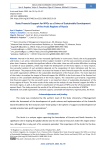
Статья научная
Interest in the Arctic zone has increased significantly in recent years. Russia, due to its geography and history, is an active, interested and direct subject involved in all the socio-economic processes taking place here. However, despite the significant efforts of the state, there are still certain difficulties in solving a number of social problems, which may hinder the development of the Arctic regions. In many respects, the successful solution of such problems depends on the cooperation of state institutions and the nonprofit sector. The purpose of the study is to assess the impact of state financial support for socially oriented non-profit organizations (NPOs) on the sustainable development of the Russian Arctic. The main objective of the study is to analyze the impact of financial support for SONPOs in the Arctic zone of the Russian Federation on the sustainable development of the Arctic regions. The researchers put forward a hypothesis that financial support for the non-profit sector is an important driver of sustainable development of the Arctic regions of Russia. The main results of the study are the analysis of state financial support for NPOs in the Arctic region, as well as the author’s classification of the goals of NPOs and the UN Sustainable Development Goals. The study presents the results of the all-Russian survey on the activities of SONPOs.
Бесплатно
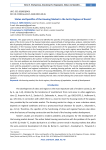
Status and specifics of the housing market in the Arctic regions of Russia
Статья научная
This paper aims to analyze and identify the specifics of housing industry development in the regions of the Arctic zone of the Russian Federation using methods of comparative, analysis, statistical methods of grouping indicators, the method of scoring points. In the course of the work, an analysis of economic indicators of the housing market development, an assessment of the population's effective demand for housing. The main trends in the housing market development in the arctic regions were identified. The results show insufficient and uneven rates of construction of housing, a high share of emergency housing, and low investment in the housing industry in some regions. A disparity was observed between real estate prices and the population income because the population debt burden on the housing credit is quite high. According to the developed by the authors’ method of assessing the housing market based on selected indicators, the main problems are characterized and the development of the housing market in the arctic regions is assessed. It was found that in some regions the level of economic indicators of housing market development and the population's solvency significantly lags the Russian trends. The results have practical significance for the federal and regional authorities in creating housing policies and the implementation programs of national projects in the sphere of housing affordability, the main directions which should be demographic to attract and increase the resident population in the Russian Arctic, as well as the regulatory functions of the housing market by reducing interest rates and stimulating the construction industry development.
Бесплатно

Статья научная
The Russian Arctic has been attracting a growing interest in terms of research and management. The former is due to the lack of knowledge about current processes in its development in the rapidly changing internal and external environments, and the latter is driven by the rising significance of this macroregion in ensuring the country’s economic, ecological, geopolitical stability, and national security. Being interdependent, these interest spheres evidence the demand for the study of Arctic regions, especially newly established ones, and underlie its practical value, which consists in building the analytical foundations for working out and implementing the administrative mechanisms for socio-economic space integration in Arctic regions. Hence, the aim of this study is to define the strategic development priorities for the regional socio-economic system of the Karelian Arctic as a newly established region in the context of the multifarious Russian Arctic integration processes. This aim is achieved through the following tasks: analysis of the strengths and weaknesses of the socio-economic system of the Karelian Arctic, identification of key challenges and opportunities for its development, identification of the strategic priorities to overcome threats and realize opportunities. The principal methods were expert and in-depth interviews, SWOT analysis and content analysis, the dialectic method and system approach, which were applied in the context of the propositions of spatial economics. As a result of the study, characteristics of the Karelian Arctic’s socio-economic system are identified in the context of the high-relevance problems of managing the development of the Arctic macroregion as a complex system. Directions for further research are defined, with the aim to build the scientific foundations for managing the spatial development of the Russian Arctic zone and its constituent regions and for handling the challenges hindering such development.
Бесплатно

Strategic Trends in Energy Development of the Northern Territories of Russia
Статья научная
The dynamic development of the energy market is the source of Russia’s energy diversification processes. The study presents key areas in the development of the Russian energy sector, taking into account new trends and challenges. The Arctic zone of the Russian Federation is potentially becoming a growth driver for the energy market and opens up “new windows” for the country’s economic development. It is determined that the structure of consumption, use of resources, generation and transmission of electricity is changing. Long-term trends in the energy transition demonstrate a change in the energy balance in favor of clean energy sources: wind, solar, nuclear, geothermal, hydropower, hydrogen, and bioenergy. The development of hydrogen energy, including in the northern territories of Russia, creates a reliable basis for integration into the global hydrogen infrastructure. The change in the energy balance in favor of renewable energy sources (RES) is presented. According to the International Energy Agency (IEA), RES will account for up to 95% of new energy capacity additions by 2026. The global climate agenda — the rejection of fossil fuels — creates new challenges for the Russian economy and the development of its Arctic investment projects. It has been established that the current situation in the context of global technological breakthroughs and climate change is shaping the transition from vertical integration to distributed generation and decentralization. The purpose of the study is to analyze current trends in the development of the energy market, based on the results of which it is necessary to adjust the approaches of the Russian energy sector to future development, making maximum use of the opportunities of the northern territories of Russia.
Бесплатно

